Case Study: DHL Stormers
Available in:
EN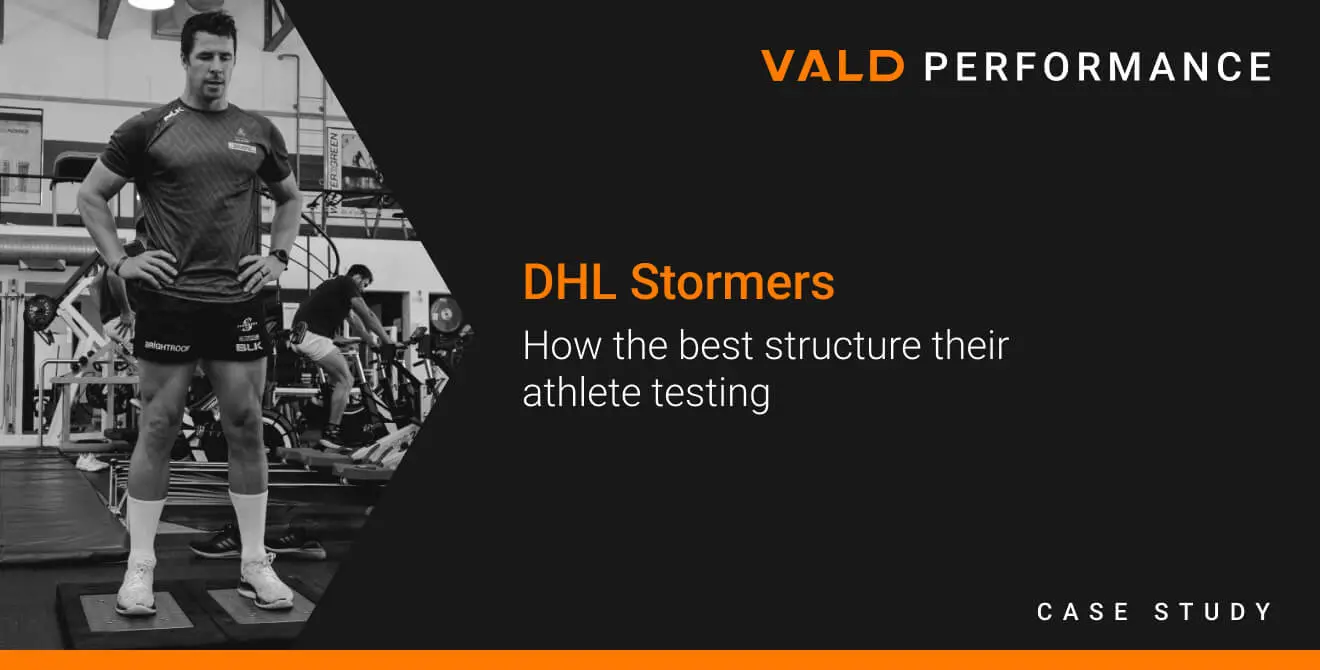
DHL Stormers
The South African professional rugby team, the DHL Stormers, uses the NordBord and ForceDecks to test and monitor players, as well as to collect normative data on their everyday training programs.
Snapshot
Based in Cape Town, the Stormers compete in the transnational United Rugby Championship, featuring teams from Ireland, Italy, Scotland, Wales and South Africa. The team integrates VALD systems to test and monitor players, ensuring they maintain peak performance and optimal rehabilitation.
Nico de Villiers is one of the club’s strength and conditioning (S&C) coaches and helps oversee an extended squad of up to 50 players, including several full South African internationals. His department uses ForceDecks and NordBord to assess and monitor players in both the high-performance and rehabilitation environments and to collect and analyze normative data used to create baselines for players.
In this case study, de Villiers explains how the Stormers use the NordBord and ForceDecks as part of their training and rehabilitation, as well as to test strength asymmetries and capture objective data aimed at helping players return from injuries in optimal condition.
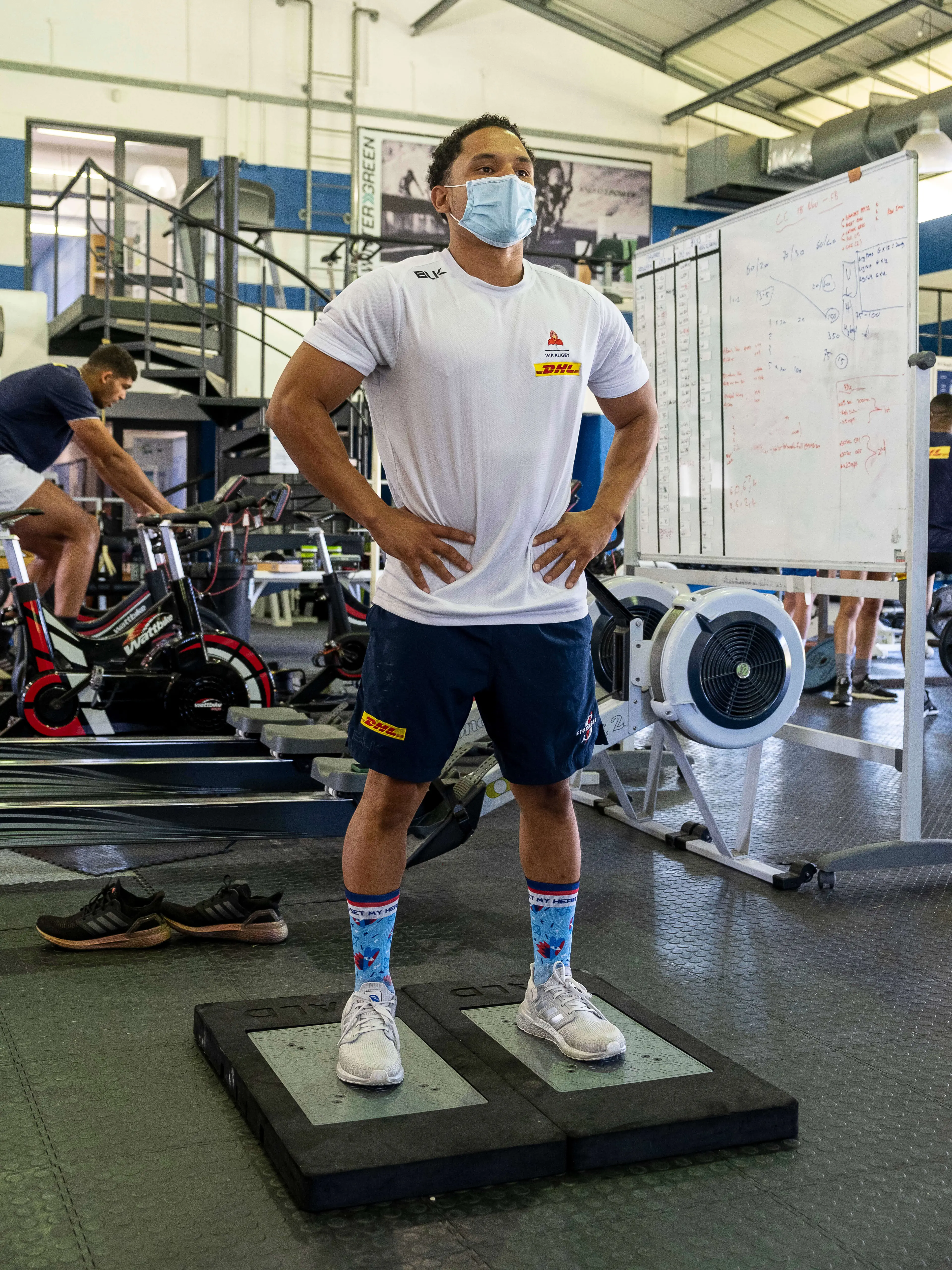
Herschel Jantjies on the ForceDecks.
Hamstring Testing with the NordBord
With hamstring injuries being a common occurrence in professional rugby, we use the NordBord Hamstring System not only to test overall hamstring strength but also to measure asymmetries.
We assess our squad’s eccentric hamstring strength capabilities to see if there are any glaring weaknesses based on normative data or their in-house Z-scores. Players who have significantly lower scores than their peers and show some weakness in other hamstring assessments, like a Single Leg Bridge, receive targeted interventions to address those strength issues.
While it’s not unusual for each individual to have differing hamstring strengths, the NordBord helps capture objective data used to measure significant asymmetries that require intervention from trainers.
If a player has very high eccentric strength scores on both legs but is not equally strong on both sides, we're not too concerned about it.
We start taking note of asymmetry above 15% and will only really address this if the weaker side is also weak compared to normative data.
We use the NordBord to collect longitudinal data to measure the baseline and get injured players back on the park in optimal physical conditions. We also use the NordBord in rehabilitation to help players returning from injuries regain their eccentric strength scores to pre-injury baselines or better.
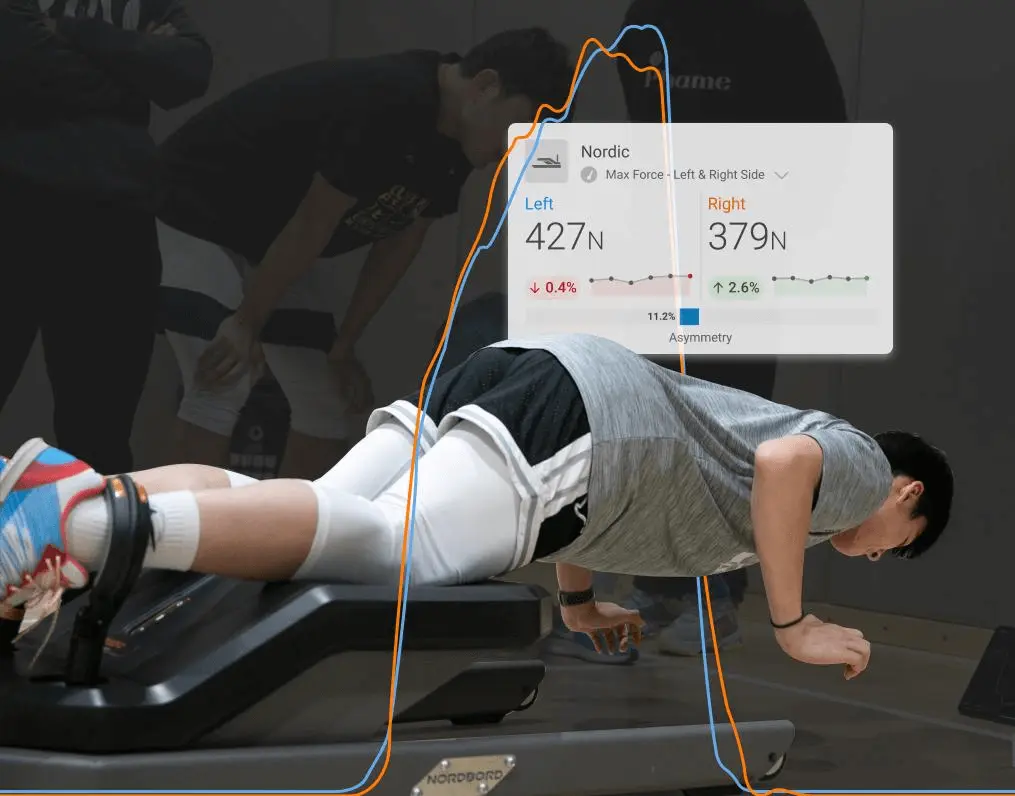
Longitudinal tracking of hamstring strength and asymmetries using the NordBord, aiding in targeted rehabilitation and performance monitoring.
Measuring Strength and Jumps with ForceDecks
Along with the NordBord, we also use the ForceDecks Dual Force Plate System to test players’ force-generating abilities and to help aid their recovery from injuries.
We use ForceDecks in both the performance and the rehabilitation setting. In the performance setting, we assess all players’ force-generating capabilities with and without time constraints to prescribe and tailor training interventions that enhance strengths and mitigate weaknesses within their power profiles.
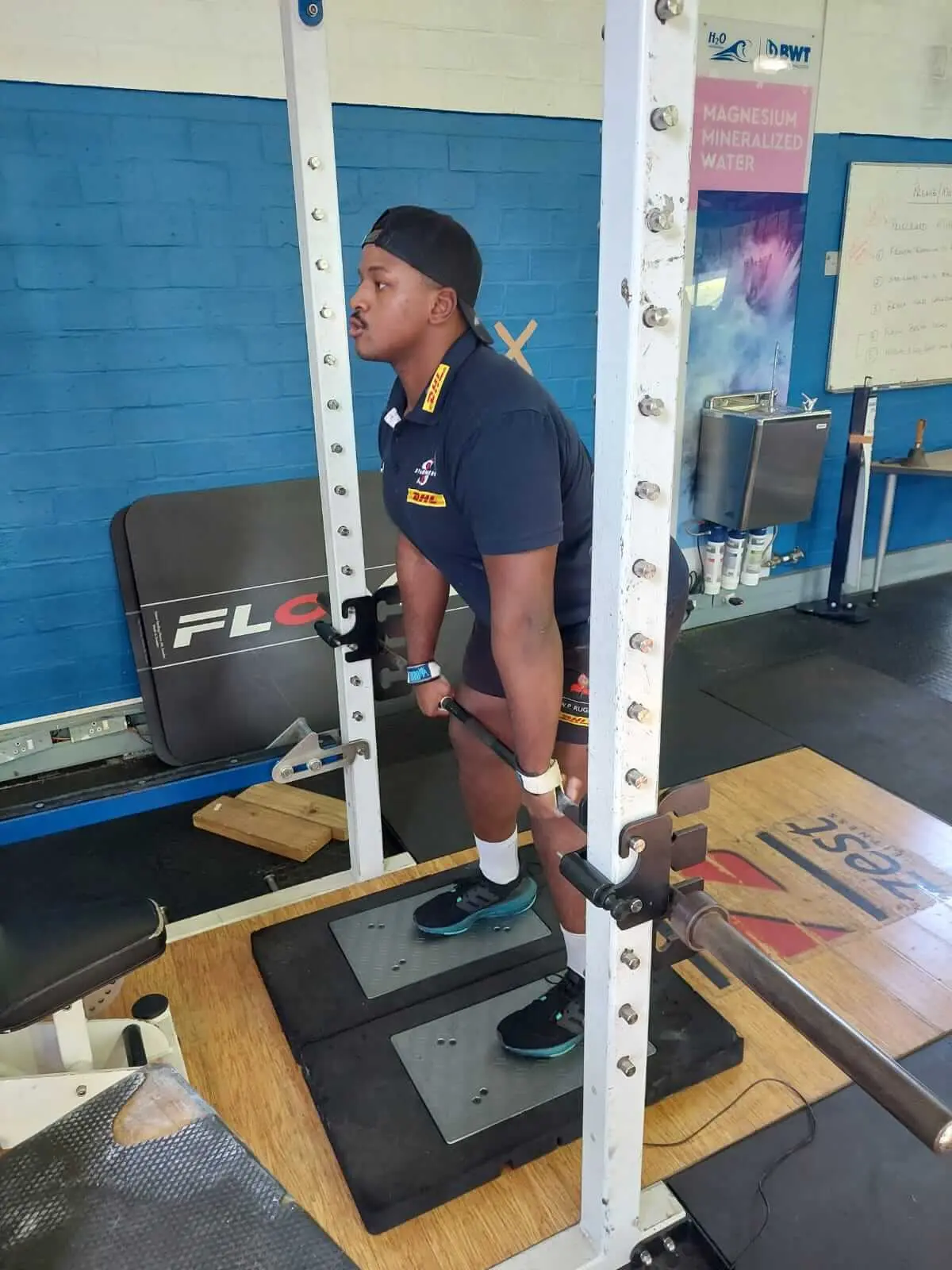
Sazi Sandi performing an Isometric Mid-Thigh Pull (IMTP) on the ForceDecks.
Capturing objective data across an entire squad allows us to assess how players are performing after training and playing games at the highest level. By accurately measuring various metrics during the Countermovement Jump (CMJ), the ForceDecks serves as a fatigue-monitoring tool during the season to see how players respond to load and whether there is any residual fatigue 72 hours after a game.
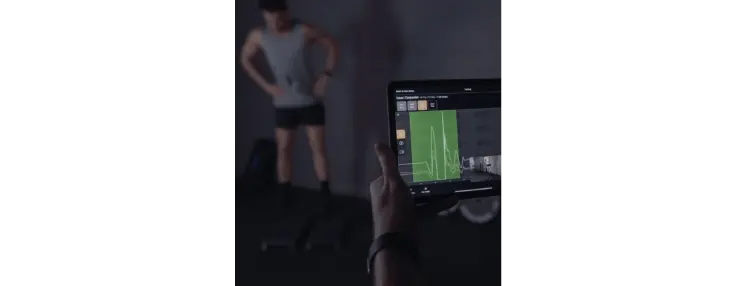
The ForceDecks Vision and Auto-Detect function in action.
Creating Baselines to Inform Injury Rehabilitation
The rehab setting is likely where we use ForceDecks the most. Not only is it very useful to assess whether a player is back to pre-injury baseline power and strength scores, but also to highlight specific areas of asymmetric deficit.
Whether it is concentric force production, eccentric velocity, Rate of Force Development (RFD) or dipping depth in a jump, we can have much more specific interventions to prepare the player as they get closer to stepping back onto the field.
The more objective data we collect as the S&C department, the better it is for creating baselines and tracking player performance over time. I believe that you only really know what data is telling you once you have enough of it to make correlations and comparisons within the group and between on-field key performance indicators and the data we get from technology like our VALD systems.
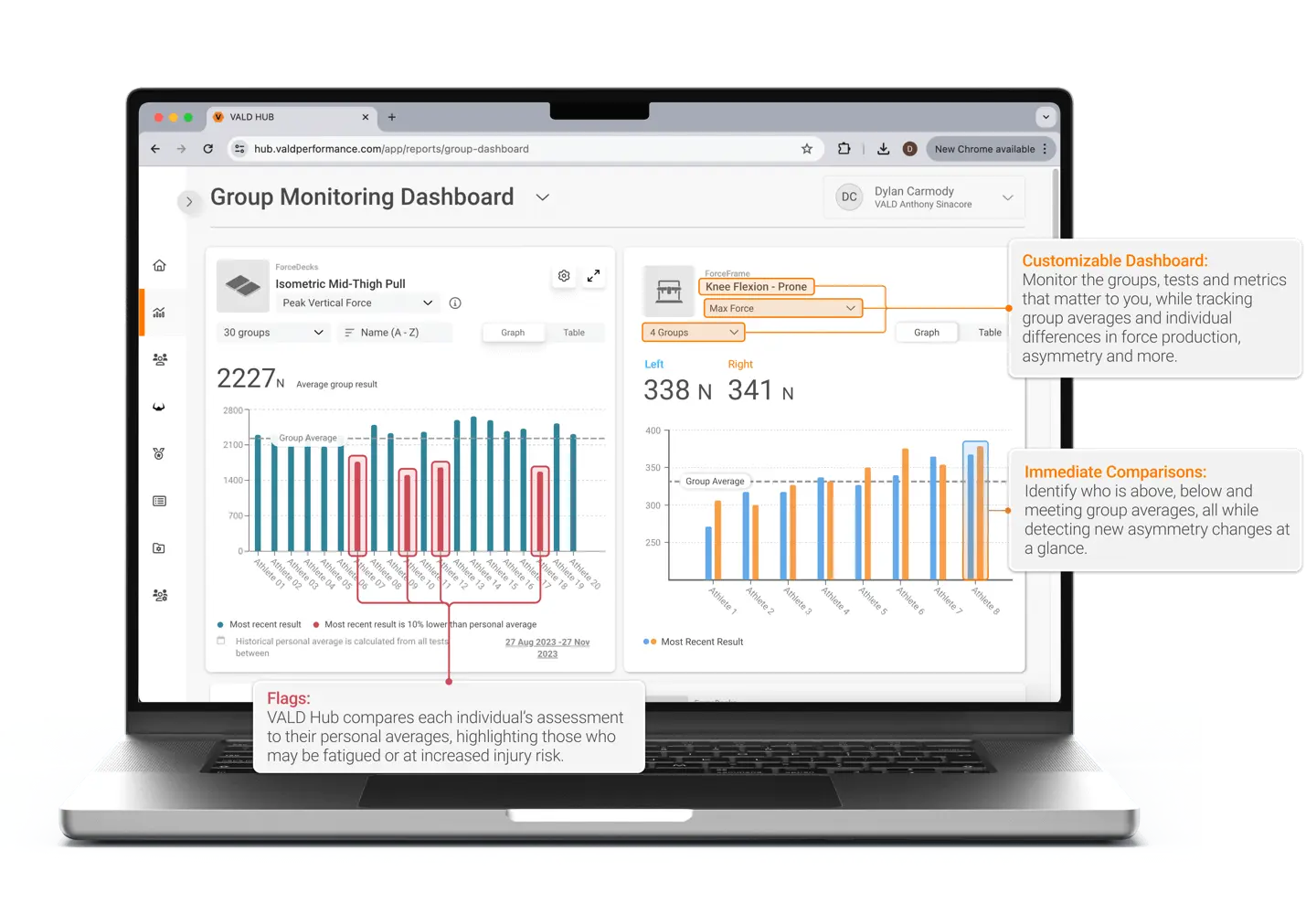
Group monitoring and benchmarking dashboard in VALD Hub, highlighting flags, asymmetries and customized reporting options.
Why the Stormers Invested in VALD Technology
With our team switching to the Northern Hemisphere’s United Rugby Championship in the midst of a global pandemic, our S&C department invested in VALD technology to help better anticipate potential injury concerns.
I think what attracted us to NordBord was the research that was done on it, which showed some good correlation between eccentric hamstring strength and injury reduction.
With our players coming back after a significant lockdown period during the COVID-19 pandemic, we knew we’d have some challenges with soft tissue injuries. To help us make decisions around training and intervention, we invested in VALD's NordBord to help us with the process during that period.
A good Nordic score is not the be-all and end-all of hamstring injury prevention – we don’t make all our decisions based on it – but it’s still a handy tool to have when we don’t see our players for a while, such as when they have time off, they’re on tour or when we get new recruits into our system.
We use ForceDecks in a similar fashion, measuring force generation on the plates and collecting normative data to ensure our players are ready to return to action. The reason we invested in ForceDecks was to help make better decisions concerning our rehabilitating players’ return to play and to give us more objective data points as they move through each phase of recovery.
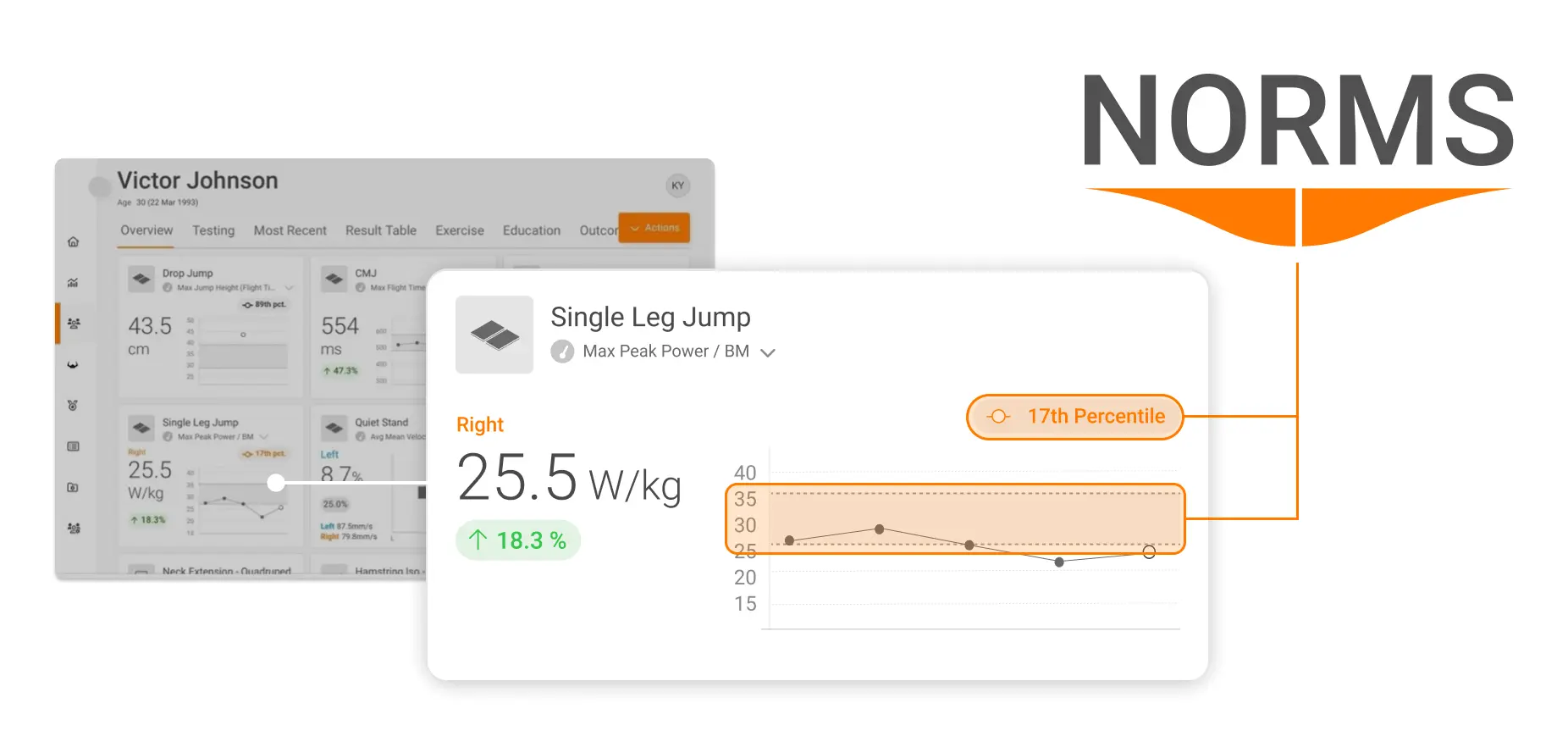
ForceDecks Norms (normative data) integrated into VALD Hub.
What a Typical Player Assessment Looks Like
For players returning from an Anterior Cruciate Ligament (ACL) injury – one of the most impactful injuries in professional sport – we typically focus on five key measurements captured by the ForceDecks.
| Phase | Measure |
| 1 | Isometric (Peak Force) |
| 2 | Isometric (RFD) |
| 3 | CMJ |
| 4 | Single Leg CMJ |
| 5 | Single Leg Drop Jump |
During the initial phase, a player will only be able to do limited isometric strength exercises. Where at the end of the phase, we can assess the player’s isometric strength through an IMTP, Isometric Squat or single variations of the two.
If we are happy with the progression, more concentric strength work is introduced and the player’s RFD becomes the focal point. Using the same test as before, we can now assess how much force a player can produce at 100 milliseconds (ms), 150 ms or 200 ms, or how long it takes to produce maximal force.
As the ability to produce forces at higher rates starts to return, we progress to more dynamic work like a CMJ, which addresses the elastic properties of the injured limb. When a player advances to performing Countermovement Jumps (CMJs) on the ForceDecks, we begin to measure how quickly they are improving.
CMJs give us a lot of feedback and data points. Asymmetries in concentric impulse or eccentric deceleration RFD help to provide more specific interventions in rehabilitation programs. When the player shows proficiency in CMJs, we can start assessing in more detail the limb asymmetry and scope of improvement within each jump.
The last step will be to assess the reactive abilities of the injured limb and Single Leg Drop Jumps are used to regularly assess that. The asymmetry in the reactive ability is something that lingers for a while and is difficult to overcome.
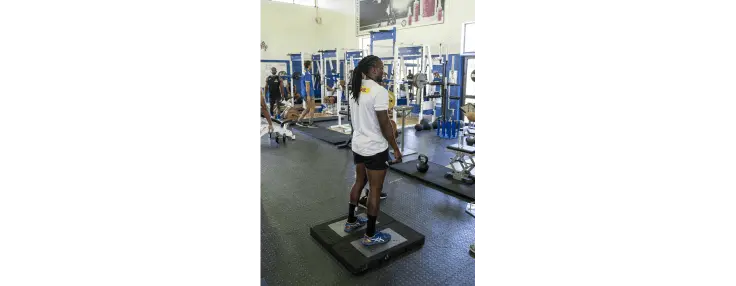
Seabelo Senatla using ForceDecks.
Creating a Test Battery Using ForceDecks
For us, a typical test battery using ForceDecks consists of the following:
| Test Type | Metric of Interest |
| IMTP | Peak Force Peak Force at 200ms Peak Force at 100ms Time to Peak Force Peak Force Relative to Body Weight |
| CMJ (hands on hips) | Jump Height (centimeters) Concentric Impulse Peak Velocity at Take-Off Eccentric Duration Eccentric Deceleration RFD Countermovement Depth Flight Time: Contraction Time Ratio |
| Isometric Single Leg Squat (15º knee flexion for selected players only) | Peak Force Peak Force at 200ms Peak Force at 100ms Time to Peak Force Percentage of Peak Force Reached in 100ms Peak Force Relative to Body Weight |
| Drop Jump (from 30 centimeters) | Reactive Strength Index Contact Time Flight Time |
We will also assess Single Leg CMJs to get some baseline data and normative values for the future. Plus, we’ll do an isometric seated plantar flexion to assess calf strength.
Objective Data as a Motivational Tool
With competition for places in the starting side high and players eager to recover from injury concerns in a timely manner, the objective data captured by VALD systems can be a powerful motivational tool. I think it’s important to create buy-in from players, especially in the rehabilitation environment.
If we can present objective data to the players and show them where there are still weaknesses and why we can’t move on in the process, we often get better buy-in from the players. The data can also be used to show injured players their recovery is progressing as expected.
Often, the data can give a player the confidence to move on to something more challenging.
If I can show a player that his isometric strength is back to 90% or that his isometric single-leg strength is similar to a non-injured player, it can provide them with enough confidence to return to action where they might have been skeptical before.
It’s key for players to feel empowered, not intimidated, by the data captured by technologies like the NordBord and ForceDecks. So, we use this information to build confidence, encourage, educate and explain – never to scare or create doubt about a player’s ability.
How VALD Technology Can Help Other Clubs
With the NordBord and ForceDecks now successfully integrated into our everyday training and rehabilitation programs, I’ll say professional clubs looking to invest in new technology should consider four key factors.
The systems should:
- Save high-performance professionals time
- Save clubs money
- Generate objective insights
- Help solve challenges in performance and rehab
Streamlining to Save Time and Money
Ultimately, technology should make life easier for us, help us take on time-consuming activities and make them more streamlined. Often, as S&C coaches, we are deprived of time and are already stretched thin with our daily tasks.
We are desperate to keep our best players on the park, making injury prevention a key focus.
One of the greatest costs to professional sporting teams is injured players who are not on the field. If we can keep the bulk of our squad on the field, we don’t have to pay for players who are in rehabilitation all the time, ultimately saving us money. As difficult as it is to prevent injuries, if you have access to the right data about your players, you can intervene more effectively and hopefully design some injury-mitigation strategies.
If you would like to learn more about how VALD technologies can enhance your team's performance and streamline your rehabilitation processes, please get in touch.
